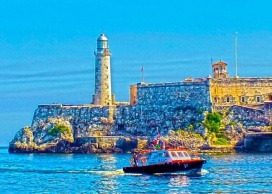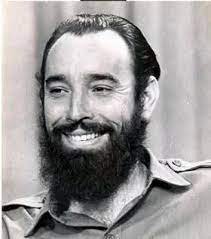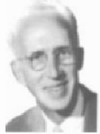
Havana ephemeris. September 13th.
1890. The “Alhambra” Theater was created in Havana.

In this installation, the alhambresco genre was conceived and lasted for 35 years, which reflected on the stage the types and customs of Cuban society at that time.
In the same way, the longest season of the Cuban scene was held in the "Alhambra" theater, which took place from November 10, 1900, when the theater was rented by the librettist Federico Villoch, the set designer Miguel Arias and the actor José López Falco, and ended on February 18, 1935, when the roof of the portico and part of the theater stalls collapsed.
More than two thousand works were presented at the "Alhambra", a theater that was intended for men only. In the works that were staged, the management of the rulers, world events were evidenced, and parodies of well-known plays were also performed.
1890. Miguel Ángel Moenck is born in Havana.
From a young age he began sports practices, excelling in athletics in the specialties of long jump, high jump and 800-meter dash, where he participated in the first competitions held in Cuba. Years later, when the Cuban Olympic Committee was founded, he was elected president of the organization. He was also a member of the International Olympic Committee.
In 1920, after graduating as an architect, he worked at the Architecture Department of the University of Havana. He also participates in the creation of important works in the Cuban capital.
His death occurred in Havana on September 1, 1969.
1974. Commander-in-Chief Fidel Castro closes the III Conference of the Youth Technical Brigades at the Lázaro Peña theater of the Central de Trabajadores de Cuba.

He points out: “Today concludes a brilliant day of our youth movement in favor of the future of the country. It is not difficult to understand the importance of this Third Conference and this movement for our country. If we review the past, we will see that in these years great changes have been taking place in the production of our material wealth and the services that the people require. There is practically not a single branch of the economy or of services where important changes have not occurred on the technical side.”
1998. Dr. Antonio Núñez Jiménez dies in Havana.

He was born on April 20, 1923 in the town of Alquízar, today the province of Artemisa.
He became a prominent Cuban geographer and speleologist. In 1940 he founded the Speleological Society of Cuba, in which he held the positions of president and director of its museum. He devoted himself to the study of speleology and geography in Cuba. In various expeditions he toured the Cuban territory and studied even its most remote and least known corners.
He was in the polar zones of the world and also led a very significant journey made by canoe from the Amazon to the Caribbean.
He created a Foundation related to nature and man that after his death was identified with his name.
2016. Eusebio Leal Spengler is awarded the title of Doctor Honoris Causa in Humanities from the University of Havana. Such academic status was conferred on him in a solemn act in the Aula Magna.

Upon receiving the award, the Historian of Havana, in his acceptance speech, recalled his teachers and all those who played a fundamental role in his training and pointed out: “When I arrived at the University I said: I seek eternal life in these classrooms, which is the same as knowledge, because only in this way can we interpret the past and the future”.
